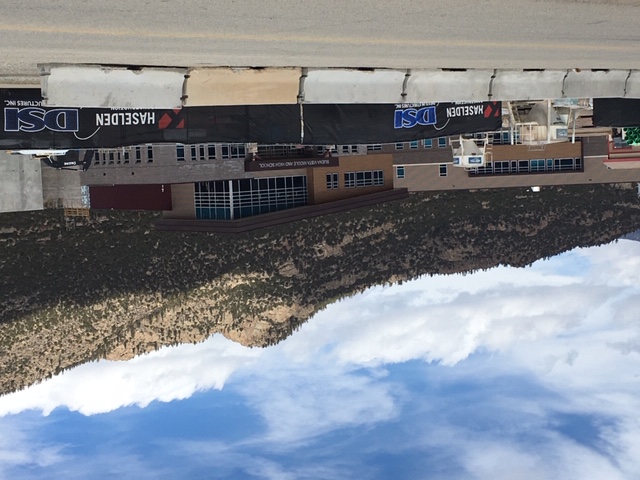With schools opening in a little over a month, Buena Vista School District is grappling with the “New Normal” and the far-reaching implications of the COVID-19 pandemic.
The district says it is preparing to open Aug. 27 with a multi-tiered approach to outbreaks of the COVID-19 virus, with the most extreme version being at-home schooling for all. The current “green level” plan is for students to return to school in person if infection numbers remain stable, as the numbers had been until recently in Chaffee County (an outbreak in the Buena Vista Corrections Complex is pushing up Chaffee numbers, but not across the general community). To reduce risks at schools, support its staff, and acquire new personnel, the district will be using new funding targeting COVID-19 response.
The district has roughly $500,000 in Coronavirus Relief Funds that were generated at the federal level, then flowed to the states to distribute to schools. In addition, the district will be working with about $150,000 in ESSER (Elementary and Secondary School Emergency Relief) funds.
For starters, the district will be needing more staff, including two additional custodians, substitutes, staff for homebound services, and a medical assistant who will process the data generated by daily student screenings. One of the many changes for students and their families will be a morning screening that must be done before a student is sent to school. Parents will have a QR code system that confirms to the schools that kids are symptom-free, and the district has additional screening plans to address the times when kids miss a home screening and go to school.
There is $150,000 allocated for the additional staffing. To address the uptick in training and work duties for staff, another $150,000 is set aside, in addition to $40,000 for new cleaning supplies.
Superintendent Lisa Yates said there’s a possibility of the district acquiring UV sanitizing devices, which are showing success at killing the virus in a short time without chemicals. She said there needs to be more data before the district would make the expenditure, but she is hopeful about the technology so far.
Other plans for the new funds: Devices and hot spots for students who do not have adequate access for working at home, $80,000; collaboration with local medical providers for testing and screening, $30,000; online learning platform for elementary teachers as needed, $7,500; and additional testing to assess students’ needs after being out of school for a long period, $10,000.
The game plan as of this week – it can change, depending on COVID-19 trends — is for K-12 students to return to half-day classes Thursday and Friday, Aug. 27 and 28 to get a feel for the new environment, then assume regular schedules the following Monday with multiple protocols in place for reducing risk. For example, students will have Plexiglass partitions in the lunchroom. All rooms will have hand sanitizer. Teachers working with younger children or those needing additional cues to learn the language will have face shields available to them. Sports and most extracurricular activities most likely may be curtailed.
And while there is a statewide, indoor mask mandate for people 11 and older, that 30-day provision expires Aug. 16. Yates says if the mandate continues, then the district will follow suit. If not, there will likely be a zone approach, where masks are required in high-traffic, more crowded spaces.
Yates acknowledges that back to school will be like nothing the students, staff, and families have seen before and that while the district wants children to be able to be educated in person, “We will absolutely respond to what the county health data is saying.”
“I want to honor and respect how difficult this is as a parent,” she said at Monday evening’s weekly update for families. “In my soul, I am a parent.”







There are many cases that have been found without explanation of how & where the victims contracted the virus. Some patients claim that they distanced and wore masks whenever they were out in public. Reports say that indoors, the virus can linger in the air for long periods, (several minutes or more). So, when a contagious person spends time in a room, others could be in jeopardy if they’re in that room at the same time or even after the spreader has gone. And, it’s even possible the virus can be spread by forced air heating and air conditioning systems. I’m hoping the school year will open up with online classes for at least a couple of weeks or a month after other “guinea pig” schools have shown us what works or doesn’t.